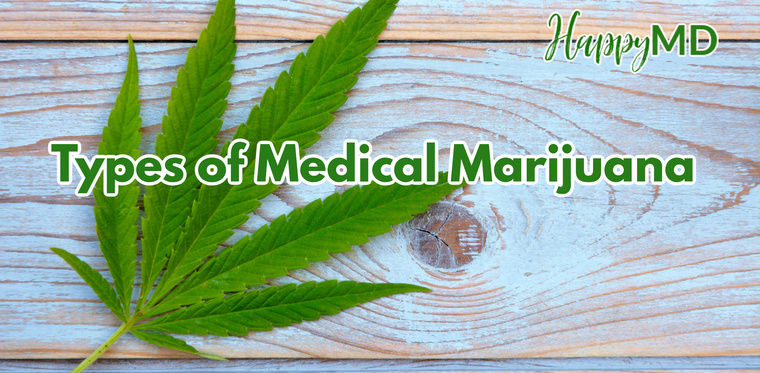
Types of Medical Marijuana
With many states across the country legalizing marijuana, many individuals have started learning that cannabis has multiple varieties. Manufacturers prepare cannabis or marijuana in different ways. Cannabis potency and preparation usually vary from one marijuana plant to the other. Remember that the route of administration affects the intensity of this drug’s effects.
This article explores the different options you can get for your marijuana consumption. Furthermore, you can learn more about the pros and cons of the particular option to help you determine the appropriate choice for your needs.
Flower
Most experts refer to this marijuana variety as pot or weed because it's the unprocessed form or variety of marijuana. Weed consists of dried buds and leaves of a female Cannabis indica and Sativa plant.
This marijuana variety has a recognizable and pungent odor when in an unburnt state or smoking. Unlike the other kitchen herbs, this odor is usually different. However, you can cut weed with benign kitchen herbs, like parsley and oregano and sell them in the underground marketplace.
Many individuals usually smoke weed in hand-rolled cigarettes called joints. When smoking the weed, you can feel its lumpy texture through the rolling paper. The lumpy texture feeling is the main differentiating characteristic between the joint and a hand-rolled tobacco cigarette.
Remember that you mix weed and hashish with rolling tobacco. This tobacco is mist, sticky, and soft making it easy to have hand rolling. Furthermore, you can mix it with deconstructed cigarettes’ dry tobacco. Experts refer to this mixture as a spliff.
You can also smoke hashish oil, weed, and hashish in water pipes, bongs, or mix with tobacco and smoke in a chillum. However, most youths are turning to e-cigarettes for vaping or inhaling marijuana.
Pros
● Most state laws allow you to grow them
● It comes in a wide range of potencies and strains
● Easily accessible in most states
Cons
● Not suitable if you have lung problems or if you are uncomfortably inhaling a lot of smoke
Edibles
Studies show that you can take marijuana orally or in cooked food as edibles. The most classic way to take or consume cannabis is taking them in the form of cookies or brownies. Nevertheless, you can consider adding it to many food types like other herbs or consider having it as candy.
Manufacturers add marijuana to foodstuffs or products through infusion, which allows you to use activated marijuana compounds. Furthermore, you can consider decarboxylation, which involves altering cannabis compounds’ chemical structure by applying heat, resulting in different cannabis psychoactive compounds.
After the decarboxylation, you can infuse the marijuana into oil or butter before adding the infused oily or fat into the edible.
Experts reveal that marijuana edibles are quite potent, and it takes a long time for you to feel the product's psychoactive effects.
Anecdotal observations report that edibles are vital remedies for conditions like epilepsy, nausea, pain, and mental conditions like depression and PTSD. Nonetheless, overconsumption marijuana edibles may cause cognitive problems, motor impairment, sedation, vomiting, anxiety, and agitation.
Pros
● It helps you avoid negative effects associated with marijuana smoke
● Provides long-lasting effects than smoked marijuana
Cons
● The body takes a long time to metabolize ingested marijuana
● The longer metabolizing time increases the temptation to consume more
Concentrates
Manufacturers produce cannabis concentrates by distilling different parts of the marijuana plants. The distillation leads to concentrated cannabinoids and terpenes.
Manufacturers use additional processes to produce marijuana concentrates, including dry ice processing, pressure/heat processing, water-based processing, and non-inflammable or flammable solvents. After the production, most concentrates resemble a soft solid, hard solid, or liquid wax.
You can consume these products differently depending on the type and form of concentrate. Surveys show that dabbing is the most common way of consuming marijuana concentrates.
What is Dabbing?
Experts also refer to dabs as amber, honeycomb, wax, shatter, or budder. These are concentrated butane hash oil forms containing high THC levels. Individuals can administer these dabs by heating these products and inhaling them or by having the hash oil in a proper vape pen.
Shatter, Wax, and Oils
Shatters are glasslike or translucent concentrate. Individuals take them by placing them on a hot surface before inhaling the smoke. Wax refers to a malleable substance having a butter-like texture to allow you to place them in a pipe or bong while smoking. Lastly, oil is a cannabis concentrate liquid that you can consume using a vape pen. You can also take it sublingually, in capsules, or as capsules.
Capsules
Manufacturers also create marijuana in capsules for you to swallow. Like edibles, the stomach absorbs this marijuana form before metabolizing it to create the ‘high’ feeling.
Tinctures
A tincture is a unique marijuana extract that combines with another substance, alcohol. You can take these products by placing a few drops below the tongue or adding them to your foods or beverages.
Hash
Hash is the short form for hashish, which is a marijuana preparation coming from cannabis Sativa or Indica resin. You must dry the resin in hashish blocks to produce a solid and oily substance. After drying the resin, warm, crumble or roll the resins together with tobacco. Alternatively, you can smoke this marijuana form in a bong, chillum, or pipe.
Pros
● Better flavors
● High potency
● Easy to use discreetly
Cons
● More expensive than the other marijuana forms
● Potential harmful side effects, like hallucinations, anxiety, etc
● Dangerous production methods, especially when using explosives or combustibles
Distillates
Manufacturers create a runny or golden oil by refining cannabis resin. The process of refining removes unwanted materials and isolates desirable cannabinoids. After getting the products, you can use them in vape cartridges or add them to other products like edibles and topicals.
Rick Simpson oil
It’s a common type of distillate with high THC levels. Experts reveal that this oil has numerous benefits like treating inflammation, asthma, depression, infections, and skin cancer.
Some studies show that CBD and THC extracts may be essential when using them as adjunctive therapies and radiation treatment.
Pros
● Distillates contain high cannabis compound concentrations due to the production process
● Have a lighter taste and smell
Cons
● It doesn’t contain cannabinoids to enhance the entourage effects
● Produces more effects only when taken with other drugs
Frequently Asked Questions
What duration does cannabis take in your system?
We’ve got various factors determining the duration cannabis remains in your system. These factors include your physiology and frequency. For instance, weed may still be detectable in your urine for 13 days upon using it one time. However, cannabis may last in your system for more than 90 days for heavy users.
Does cannabis cause addiction?
Marijuana can be very addictive. While it doesn't result in addiction for most users, approximately 30% of the users develop a certain cannabis use disorder.
After how long do marijuana edibles effects kick in?
Experts reveal that it takes a long time for marijuana edible effects to kick in. Despite the longer time it takes, these effects stay for longer. A study shows that taking THC orally, like in edibles, can take approximately 30 to 90 minutes to feel the effects.


.png)